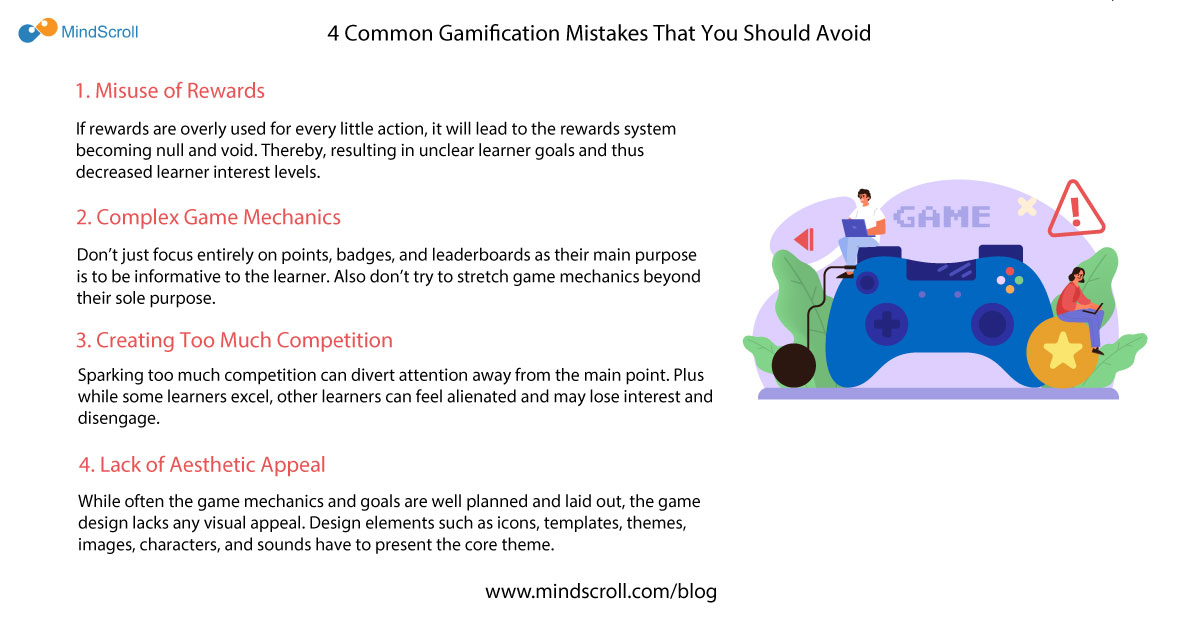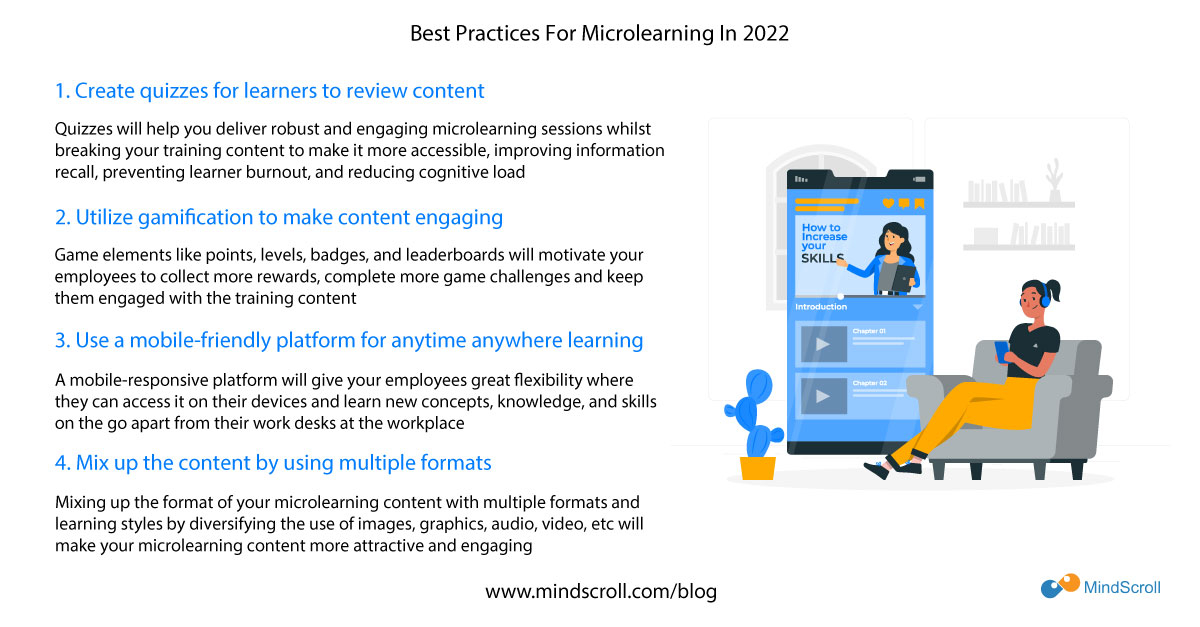Today many companies are incorporating gamification elements into their training strategy to drive engagement and increase the adoption of several features. However, it is really not that easy to implement and can lead to many mistakes that should be avoided. With gamification, it’s important that you tailor the gamified eLearning experience to your learners and engage them on an individual basis. This will ensure that the gamification experience is truly engaging and impactful.
Effective gamification requires careful research and clear learning goals. In this article, we show you 4 common gamification mistakes that you should avoid when creating a gamified eLearning experience in your organization:
1. Misuse of Rewards
2. Complex Game Mechanics
3. Creating Too Much Competition
4. Lack of Aesthetic Appeal
1. Misuse of Rewards
Rewards are not the centerpiece of your gamification strategy. While they do identify learner accomplishments, a common mistake made by many is to place rewards above results. The actual purpose of rewards is to motivate your learners to achieve the desired outcome. Badges, levels, and points are game mechanics to motivate and engage learners in their learning journey.
However, if rewards are overly used for every little action, it will lead to the rewards system becoming null and void. Thereby, resulting in unclear learner goals and thus decreased learner interest levels. It can also lead to a situation where you will have to keep on adding new rewards. Then eventually a time will come where learners will have no reason to engage with your content after they have earned all the rewards on your eLearning platform.
Therefore, ensure that not only are your learners engaged but they are also motivated by the process of engaging with your platform. Don’t reward every action but choose two or three actions for giving rewards. Also start with clear campaign goals and then determine how game mechanics will fit into the picture, and not the other way around. Lastly, make sure that you don’t prioritize rewards over results.
2. Complex Game Mechanics
It is often seen that game mechanics are misused. For gamified learning to be effective, it is essential that game mechanics are kept simple and straightforward. Don’t just focus entirely on points, badges, and leaderboards as their main purpose is to be informative to the learner. Also don’t complicate things with hard to understand points and badges systems or leaderboards involving a complex set of rules and criteria. Also don’t try to stretch game mechanics beyond their sole purpose.
Hence, simplify gamification and keep it as basic as possible so that your learners know the way to earn rewards and their importance. Only use achievements that award learners for their performance, and not just participation. In gamification strategy, always think about the problem that you are trying to solve. Thus, use points and badges to recognise learner accomplishments and not the reason for your learners to do something.
3. Creating Too Much Competition
Sparking too much competition with everyone trying to reach the top of the leaderboard will not give you the desired results that you want. It is important to strike a balance as too much competition can create the opposite effect leading to learners feeling uncomfortable and thus becoming disengaged and discouraged.
It is true that competition adds excitement but it can divert attention away from the main point. Plus while some learners excel, other learners can feel alienated and may lose interest and disengage. Therefore, it is better if learners are given smaller rewards rather than a grand reward that might cause learners to only become fixated on the prize.
4. Lack of Aesthetic Appeal
Another common mistake that occurs in gamification is the absence of aesthetic appeal. While often the game mechanics and goals are well planned and laid out, the game design lacks any visual appeal. Design elements such as icons, templates, themes, images, characters, sounds have to present the core theme. For this they have to be thoughtfully made in order to enhance your training program.
Hence, for gamified learning to be successful, it is essential that it grabs the attention of learners and clearly reflects the subject and your brand image.
Final Thoughts
Now we know how these gamification mistakes mentioned above can reduce your training’s value and adversely impact your ROI. Hence, we hope this article gave you some insights on the 4 common gamification mistakes to avoid in order to create a winning strategy that suits your learners and your organization. To help you understand more about gamification, read our article here.
Schedule a demo if you want to know how you can use MindScroll LMS for providing your users with an engaging gamified learning experience. Learn more on www.mindscroll.com/features. If you have any queries, do contact us at yg@infonative.net.
Did you like this blog post? Do you know of any other common gamification mistakes that we missed? Tell us your thoughts or share this blog post on our social media platforms below:
Facebook (@MindScroll) | Twitter (@mindscroll_lms) | LinkedIn (@MindScroll) | Instagram (@mindscroll_lms)
Check our blog for resources you and your team may need.
Read next: What Do Modern Learners Want From Your Online Courses




